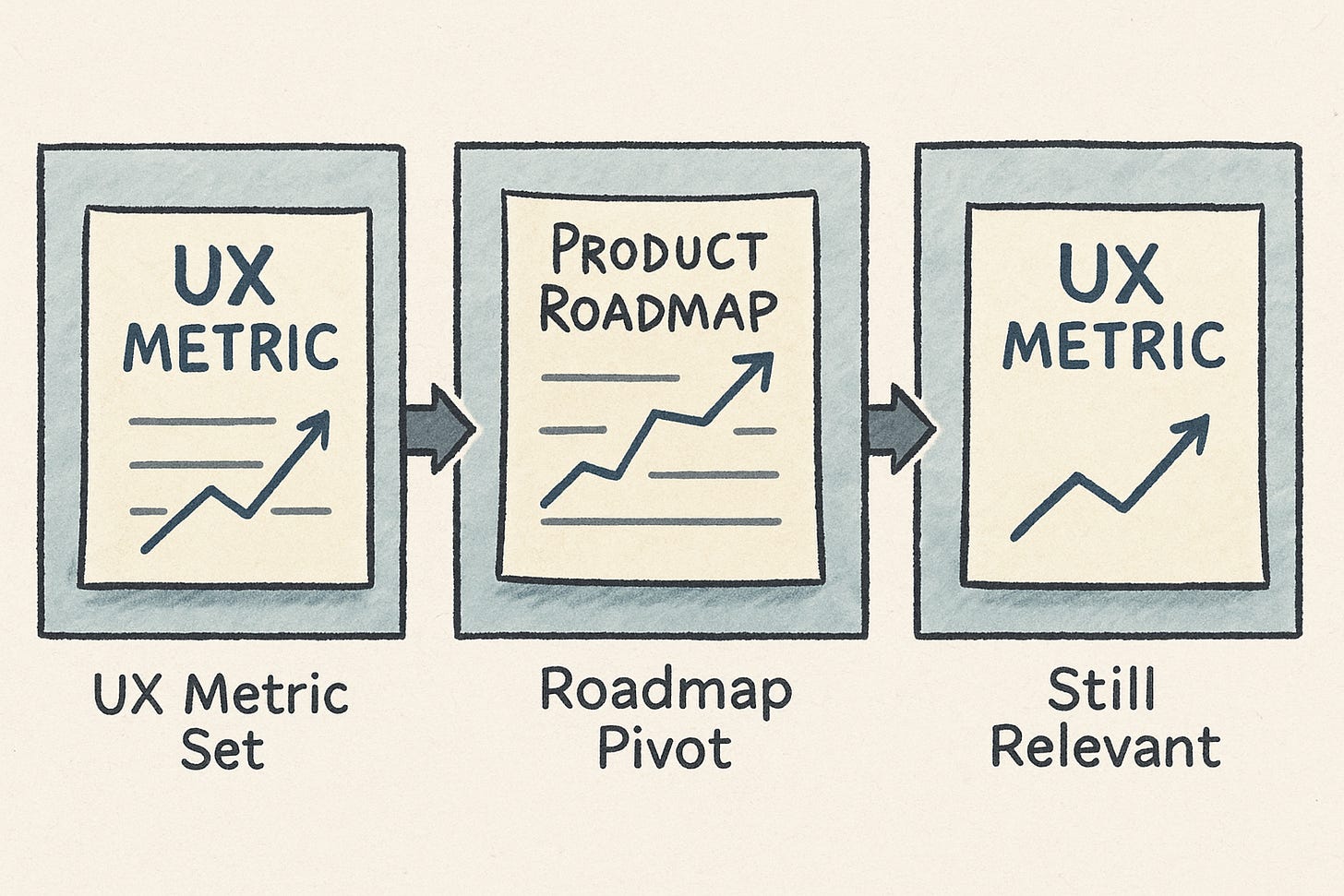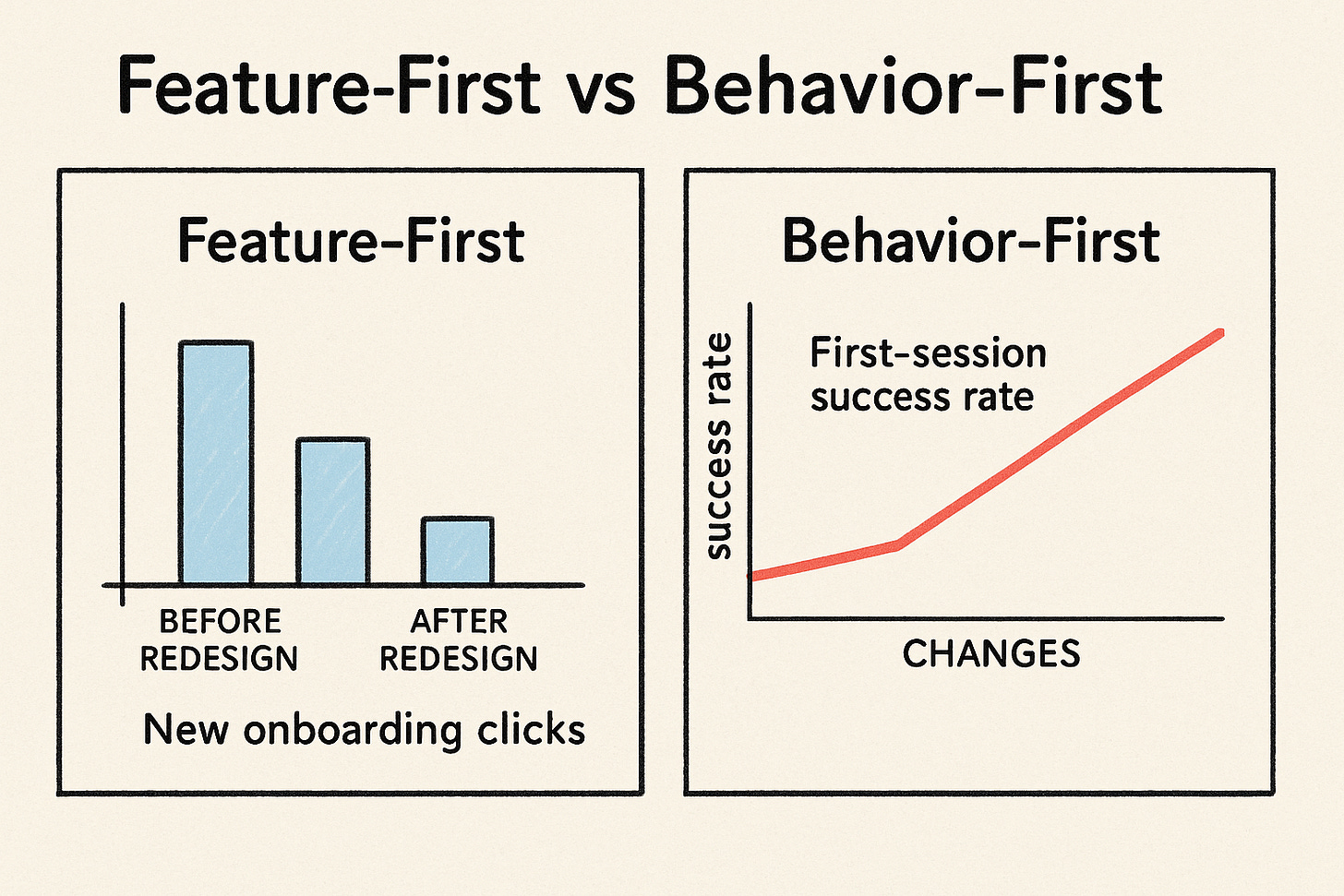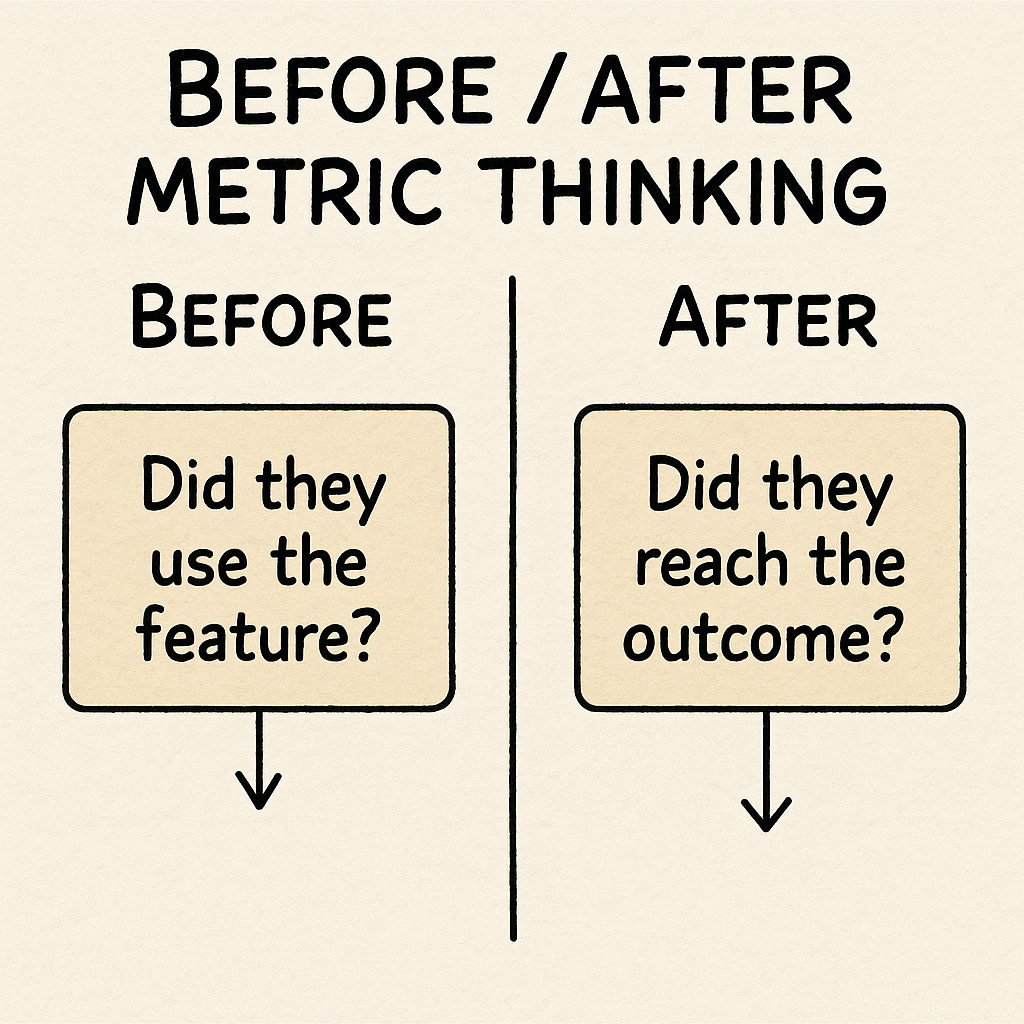How to Set UX Metrics That Survive Roadmap Changes
A quick metric-mapping exercise
Product roadmaps shift.
Priorities change.
Features get cut, re-scoped, or postponed.
But your UX work?
It still needs to prove impact.
The best UX metrics don’t tie themselves to fragile features.
They anchor to something deeper - user behavior, product outcomes, and patterns that still matter even when the sprint board changes.
This is a short guide to setting UX metrics that don’t break when the roadmap does.
In This Issue
Why most UX metrics don’t hold up
What good UX metrics actually look like
Three types of metrics that outlast roadmap shifts
A quick metric-mapping exercise
Signs your metrics are influencing strategy
Resources
Why most UX metrics don’t hold up
Because they’re built on features, not behaviors.
We track:
“Clicks on the CTA”
“Use of the new widget”
“Completion of one specific flow”
Then the roadmap changes and suddenly, the metric dies.
You’re left with nothing to show for the UX work you’ve done.
Good metrics survive pivots because they measure user value, not implementation.
Level Up Your Quant Skills - Survey Camp
If you’ve ever wanted to feel more confident running surveys or translating numbers into insights that matter, this is for you.
The UXR Institute is hosting Survey Camp starting TODAY, November 17 to November 19th. It is a series of live, online workshops designed to help UX professionals build practical quantitative research skills. You’ll learn how to write stronger survey questions, uncover patterns in data, and use structured analysis to support your recommendations.
A few things you’ll explore:
How to design survey questions that avoid bias
How to size your sample
How to analyze data in a way that tells a clear story
Exclusive for the UXU community:
Use code: UXU20 for 20% off all workshops.
What good UX metrics actually look like
They answer one question:
“How do we know if the user is succeeding no matter what the UI looks like?”
They’re:
Tied to outcomes, not steps
Based on user behavior, not UI layout
Easy to track over time
Useful to more than just the design team
Stable enough to live through 3 roadmap changes
Three types of metrics that outlast roadmap shifts
1. Task Success Rate
How many users actually complete a key task?
Whether it’s setting up an account, sending a payment, or submitting a form — this metric tracks success, even if the journey changes.
—
2. Time to Value (TTV)
How long does it take for a new user to experience the core benefit?
If you shorten this time, you’re doing real UX work regardless of which feature delivered it.
—
3. Friction Points per Session
How often do users hit blockers, errors, or abandon flows?
Count drop-off moments, rage clicks, backtracks. The exact surface may shift, but friction always matters.
Exercise: Map your current metric to user value
Take one UX metric you’re currently using. Ask:
Is it tied to a feature or a behavior?
If the feature disappeared tomorrow, would this still be worth tracking?
What’s the underlying user success it’s trying to reflect?
Now reframe the metric.
For example:
Original: “% of users clicking the Help icon”
→ Reframed: “% of users who complete setup without needing help”
That’s the version that sticks - even when the help icon moves.
Signs your metrics are influencing strategy
PMs include your UX metrics in sprint success criteria
Your team tracks improvements across releases — not just per feature
You get asked: “Can we baseline this before the redesign?”
Metrics are shared in product reviews, not just research recaps
Even non-designers start asking, “What’s our time to value now?”
Resource Corner
Designing around “user impact” rather than features.
Using Prioritization Matrices to Inform UX Decisions
Measuring types of Metrics in UX | Top UX Metrics to use ...
The UX Research Method Matrix: A Systematic Approach for ...
Final Thought
UX metrics aren’t just for dashboards.
They’re for defending your work when priorities shift.
They’re your voice when features disappear.
They’re how you stay relevant - no matter what’s on the roadmap.
So pick the ones that outlive the plan.
And let them guide what happens next.







